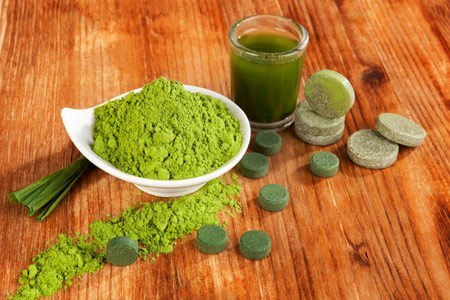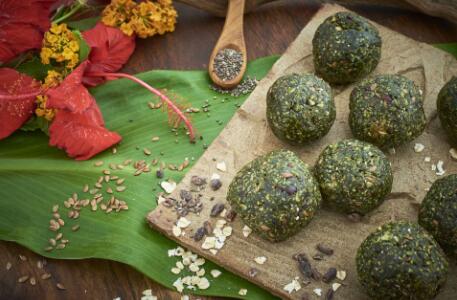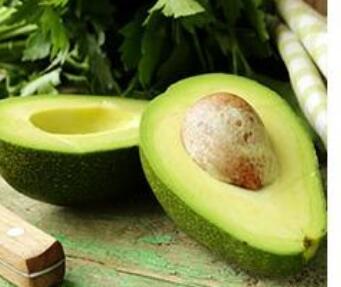 Spirulina diet is different from person to person
Spirulina diet is different from person to personWhat are the spirulina diets? The most attractive thing about spirulina tablets is its weight loss. It is important to note that the different doses and methods of taking spirulina are different, which is not only related to the effect of taking, but also related to our health. Let's take a look at the PCLADY editor below. Spirulina diet 1. For people who are mildly obese: eat 3 grams of spir...
 What group of spirulina is suitable for taking?
What group of spirulina is suitable for taking?What kind of people is Spirulina suitable for? This article will reveal this issue. How do buyers identify the quality of spirulina? For adolescents, spirulina can provide all the nutrients needed for the body's growth and development. The Mexican government stipulates that the country's children's food must contain 5% of spirulina. In Nanjing Hospital, China, spirulina and roasted malt ...
 What do you have for a cold? Spirulina has a good immune effect.
What do you have for a cold? Spirulina has a good immune effect.In life, we often have symptoms of cold and fever, followed by a series of uncomfortable symptoms. So how to prevent colds? If you have a cold, what would be better? Spirulina is a good choice, it contains a variety of nutrients, can regulate the body's acid-base balance, is very effective for colds, improve immunity. What to eat with a cold, spirulina improves immunity ...
 Green A Spirulina Pioneer of Human Resistance
Green A Spirulina Pioneer of Human ResistanceGreen A Spirulina Pioneer of Human Resistance...
 Is Spirulina effective in weight loss? The effect and effect of counting spirulina
Is Spirulina effective in weight loss? The effect and effect of counting spirulinaIs Spirulina effective in weight loss? The effect and effect of counting spirulina...
 Can atrophic gastritis take spirulina?
Can atrophic gastritis take spirulina?Can atrophic gastritis take spirulina? Let’s take a look. What group of spirulina is suitable for taking? Can be taken....
The microalgae industry has developed to its current status by providing a safe and nutritious product for the human supplement market as well as the animal and aquaculture feed markets. The vast majority of this microalgae biomass is produced from spirulina, chlorella, and Aphanizomenon flos-aqua. Concern over the discovery of toxic algae blooms in Klamath Lake underscore vital differences between cultured spirulina and species of wild lake-grown algae. Scientists believe there are over 30,000 species of microscopic algae. The immense range of species includes nutritious varieties like spirulina and chlorella, as well as potentially dangerous species such as the microcystis strains identified in Upper Klamath Lake. In this way, microalgae are similar to mushrooms—common cultured table mushrooms are absolutely safe and healthful while others, such as some toadstools can be poisonous. The same situation occurs in the bacterial group—some, like the lactobacilli are essential for good digestion while others, such as salmonella can cause disease.
Cultured spirulina can be grown free of contaminating algae for several reasons. The growing conditions for spirulina are unique as it is cultivated and thrives in very alkaline conditions. Competitor algae and other contaminants simply cannot compete and grow under these harsh conditions. Ponds are monitored and analyzed every day and carefully controlled to maintain a balanced chemistry. Samples are carefully scrutinized on a daily basis via microscopic testing to assure purity and cleanliness. Water runoff from outside sources cannot enter the raised raceways that cultivate spirulina. Thus, there is no possibility for agricultural waste such as pesticides and herbicides to contaminate the cultures. Finally, as a precautionary measure, lots are periodically screened for cyanotoxins, none have been detected in Hawaiian Spirulina cultures.
Cyanotoxins have long been recognized as a water-based disease that causes animal illness and death. The biotoxins, microcystin and nodularin, have been implicated in causing irreversible hepatotoxicity and tumor promoting reactions laboratory rats, Evidence in China suggests a correlation between microcystins in drinking water and primary liver cancer. Australia, Canada, and Great Britain are moving to establish maximum acceptable concentration (MAC) of microcystins in drinking water, which are in parts per billion. In Australia a limit of 1 ppb (1 μg/liter) has been proposed. The June 1994 Criteria Document on Microcystin-LR for Canadian drinking water recommends a MAC of 0.5 ppb (0.5 μg/liter) for microcystin-LR and 1 ppb (1.0 μg/liter) for total microcystins. An even lower level of 0.01 ppb (0.01 μg/liter) has been proposed for Chinese waters based on research and levels of microcystins found in drinking local water. Because of the risk for cancer and liver damage, further research is needed to elucidate the dose-dependent effects of microcystins. Excellent reviews of cyanotoxins, microcystins, and nodularins have been published (Carmichael; 1992, 1994, 1997).
Despite the controlled conditions, precautions, quality control, and proven safety of spirulina, consumers often confuse or associate spirulina, with wild Aphanizomenon flos-aqua which is vulnerable to toxic microcystin and nodularin contamination. As a result of these concerns, Cyanotech Corporation, Earthrise Farms (Calipatria, CA), and other international spirulina and chlorella manufacturers formed a consortium in 1995 to jointly fund a phytotoxin research project. This research was performed in the laboratory of Dr. Wayne Carmichael (Wright State University) and resulted in a very sensitive assay for microcystin and nodularin toxins in algae products. The project generated a technical booklet for the microalgae industry entitled “Detection of microcystins and nodularins using an enzyme linked immunosorbant assay (ELISA) and a protein phosphatase inhibition assay (PPIA)”. The PP2A inhibition assay is 1000 times more sensitive than the HPLC or mouse bioassay (0.05 ng/ml) and the ELISA assay method for the detection of microcystin and nodularin is sensitive to 0.002 ng/ml.
On September 27, 1999 Health Canada announced the results of their broad testing program of blue-green algae products and found only spirulina was microcystin-free. However, testing indicated that many non-Spirulina algae products harvested from natural lakes would result in a daily intake of microcystins above what is considered acceptable by Health Canada and the World Health Organization. Again, spirulina received a clean bill of health by a government agency but warned against other blue-green algae products.
Cyanotech Corporation has been a producer of spirulina (Arthrospira platensis) and other microalgae products for over 10 years in accordance with Good Manufacturing Practice. The Hawaiian production facility is 3rd party GMP certified and is inspected by the Hawaii State Department of Health. Quality control is assured on-site by technicians who conduct chemical and microbiological assays to guarantee the purity of the ponds and final product. Consumer safety of our product is of utmost priority. Spirulina received GRAS (Generally Recognized As Safe) by the FDA in 1981, whereas Aphanizomenon flos-aqua has never been granted this status. Unlike blue-green algae harvested from uncontrolled lakes, spirulina that is cultivated under carefully controlled conditions does not contain cyanotoxin contamination.
The benefits of spirulina on human health are widely considered to be significant. As it is gernerally recognized as safe by the FDA, it should be taken by any individual looking to improve their health. Learn more about spirulina to discover what it is and how its addition to one’s diet may greatly improve health.
 Appropriate clothing for more warmth
Appropriate clothing for more warmthAppropriate clothing for more warmth...
 Autumn health care, liver protection, teach you how to maintain health
Autumn health care, liver protection, teach you how to maintain healthAutumn health care, liver protection, teach you how to maintain health...
Drinking Luo Han Guo tea in the fall to reduce fire, it is important to ensure sleep...
 The most suitable soymilk variety in autumn, you must try it.
The most suitable soymilk variety in autumn, you must try it.The most suitable soymilk variety in autumn, you must try it....
 Midsummer health to nourish the heart and spleen
Midsummer health to nourish the heart and spleenMidsummer health to nourish the heart and spleen...
 It’s important to pay attention to acid in summer diet.
It’s important to pay attention to acid in summer diet.In summer, there are many situations in which everyone should pay attention to health care. At this time, the high temperature weather has a relatively large impact on our health. Therefore, we should master the method to maintain health at this time, so how do you compare the health effects in the summer? Ok, this is a question for many people in the summer. Let's take a look at how to adjust. ...
Sign up to receive exclusive promotions and health recipes via email.

